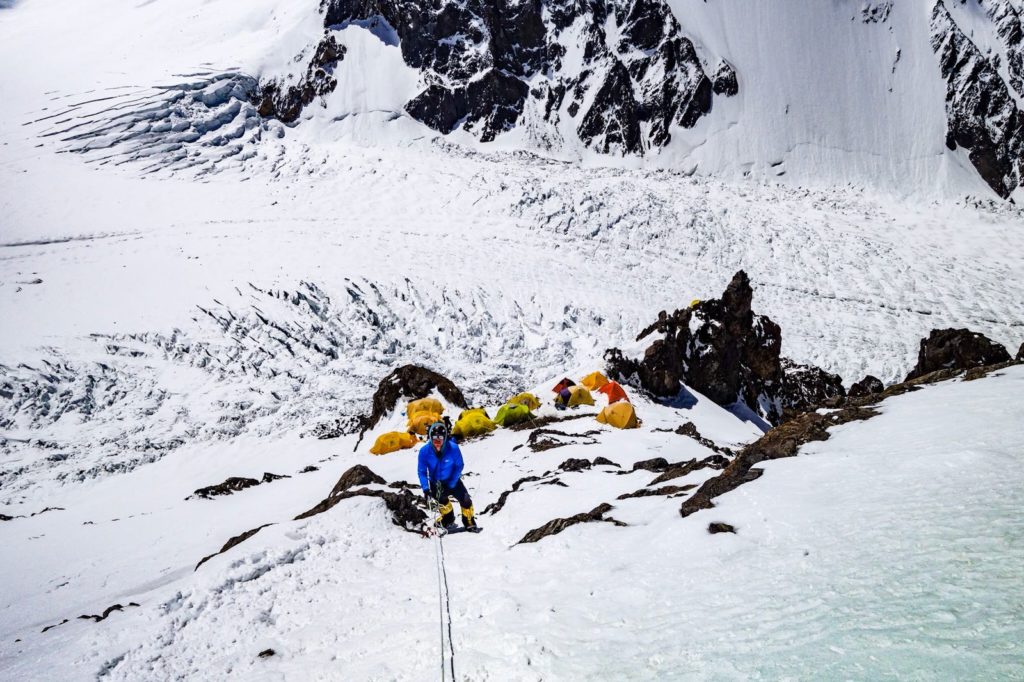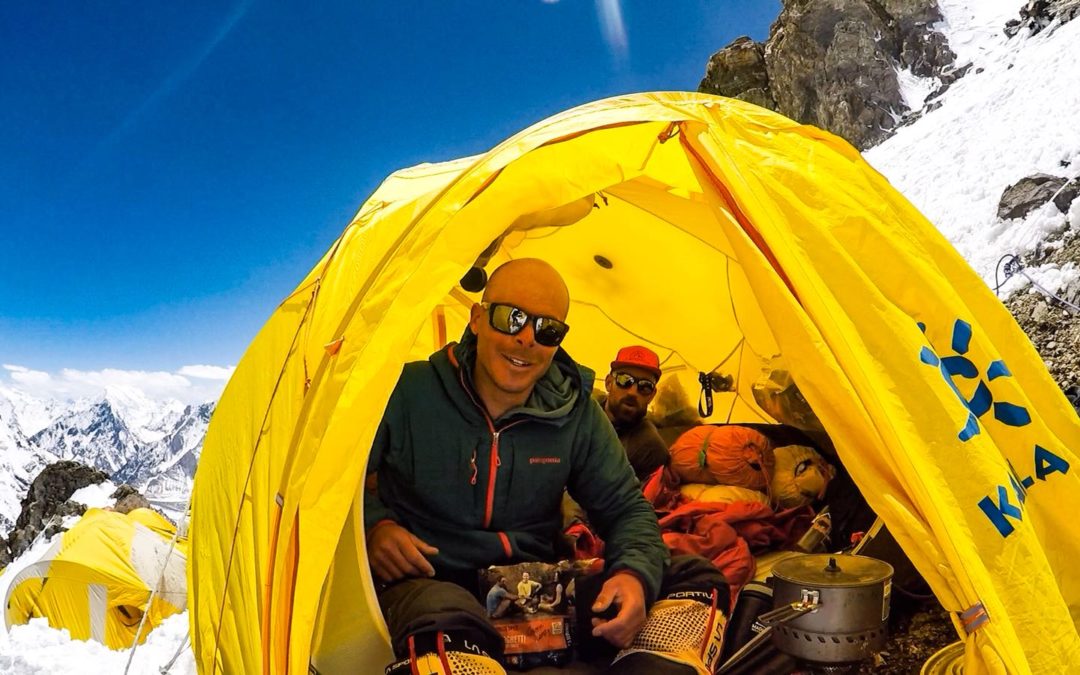It’s amazing what good sleep does for your psyche. Usually, sleep when moving up in elevation can be a real challenge, especially during the first night and when making a big leap, like 4,000 vertical feet. My night’s sleep was just the opposite of difficult, I was out like a rock and awoke with a renewed sense of confidence. It’s not that I had forgotten about what had occurred but rather, I remembered why I came here and that I had done all the right things to prepare for this mountain. I belong here.
As we consumed some dehydrated hash browns and eggs, I reflected on the previous day. Despite showing what might be perceived as moments of weakness, I was proud of how I responded because it meant that I had not been desensitized by what I have experienced over the years. The compassion towards other climbers and understanding that everyone on the mountain is part of a broader team is what keeps us safer in the long run.

Acclimatization climb above C1. You can see the tents of C1 below Geoff.
The plan for the day was to make an acclimatization climb partway up the route to C2. Before we set out, details of the accident began to surface. Garrett made a visit to Geoff and my tent to fill us in. He said that the victim was Serge, an accomplished climber from the 3 person Canadian team that was camped next to us at BC. This verified what we had heard previously. What we didn’t know was that he had been descending from C2 and was only a short way out of camp when he used a rope from a previous year to secure himself. These ropes are subjected to the elements day after day and sometimes remain years on end. Depending on the quality of the rope, some may remain usable for a couple of years but still should never be relied upon solely. Serge chose the wrong rope to rely on and it snapped when he put pressure on it. He careened over the nearly vertical face below C2, most likely killing him instantly.
With this new information in hand, Garrett had already begun to work with our Sherpas and other teams to outfit the mountain with new improved lines. Setting these lines is generally a group effort with 2-3 teams generally taking on the heavy lifting. Ropes had already been set from ABC to C1 and C2 by the Japanese team but they used a cheaper 8mm rope that almost has a plastic feel to it, known on the mountain as Korean line. Some of this had already begun to fray where it came into contact with rock and everyone was in agreement that it must be replaced. I’m proud to say that Garrett took the lead and set plans in place to replace the Korean line with the 9mm Petzl line that is such high quality that it could be mistaken for regular climbing rope, except that it is static.
We began our acclimatization climb shortly after the discussion and noticed that the Sherpas had already set some of the new Petzl line above C1. The difference was night and day. We cruised up the new line with a renewed confidence and enjoyed the amazing view as we peered down on C1 from 500’ above. On the way down, I had the opportunity to shake the rust off of my arm wrapping, a skill which I feel that I excel in. Arm wrapping is the act of wrapping the rope around your trailing arm for friction as you face directly down the mountain face while descending. You use your lead hand to guide and basically walk down the mountain in a forward lean. The much more conservative approach is rappelling, which uses a friction device on your harness to lower yourself backwards. This is more idiot proof but is tedious, limits mobility and visibility, and requires that you constantly transfer the rope on and off the rappel device when you reach an anchor. Use of the arm wrap technique is an effective method and saves a great deal of time, which is critical on a mountain like K2 where more time climbing subjects you to more objective hazard. Being the heaviest guy on the team by 20 lbs with the biggest biceps catches me some flak but for once, they provide an advantage!
Today was much needed and went a long way in reminding me that I belong on this mountain.


I cannot imagine the amount of rope that is needed for a climb like this.
Thank you for the pictures.
From this post it is obvious that you enjoy this. Stay safe and continue to enjoy the remainder of your climb.
It’s a lot! Several teams contribute but it remains a huge expense to get quality lines in place!
Is Geoff open to do a guest post? Would love to get a teammate’s perspective on everything. Also, I read all of your posts in your voice, so it would be nice to mix it up a bit.
Having Carnitas for lunch today in your honor.
Haha yes, I will pry one out of him! I would get bored of my voice too and damn, would I love to have an lb of carnitas right now. I can only eat so much buffalo and rice… it’s good but sometimes it takes list kerosine.